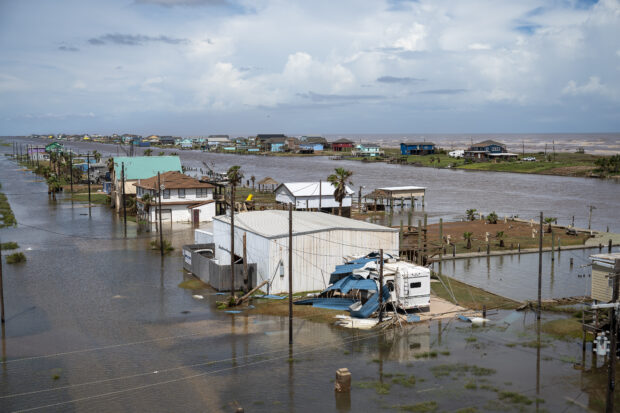Issuance of catastrophe bonds is on track to exceed the record set in 2023, as a cocktail of climate change, population density and inflation feeds growth in a market built around natural disasters.
A fresh analysis by Swiss Re shows issuance of the bonds was well over $12 billion in the first half of 2024, putting it on track to exceed the $15.6 billion issued throughout 2023. And with market growth of 7.4% in the six months through June, the first half of 2024 is now the most active for cat bond issuance on record, Swiss Re said.
The surge in issuance follows a year in which cat bonds supported the world’s best-performing hedge-fund strategy, turbo-charging their appeal among investors. Cat bonds allow insurers to transfer risk to the capital markets. Investors can face huge losses if a pre-defined catastrophe hits, but enormous gains if it doesn’t. Last year, cat bonds returned 20%, their best annual performance on record.
For insurers looking to pass on natural-disaster risk to capital markets, cat bonds have “proved to be a reliable risk management tool,” Jean-Louis Monnier, head of insurance-linked securities at Swiss Re, said in an interview.
The overall market for cat bonds reached $46.5 billion in the first half of the year, Swiss Re said, noting that the figure doesn’t include private transactions.
For investors, the appeal of cat bonds was underscored last month when careful calibration of trigger terms shielded them from losses even as Hurricane Beryl barreled through the Caribbean. As of June 30, investors in cat bonds enjoyed an average yield of about 15%, comprising a risk premium of 10% and a money market rate of about 5%.
That’s “significantly higher than similar credit products,” Swiss Re noted.
Meanwhile, cat bond investors are largely shielded from increasingly common secondary perils such as storms, floods and wildfires.
“These events have not caused any losses to cat bonds directly, however they contribute to the erosion of various aggregate structures outstanding in the market,” the Swiss Re report said.
For now, investors in cat bonds are navigating what’s forecast to be an unusually active hurricane season. Swiss Re estimates that more than 70% of outstanding cat bonds are exposed to US hurricanes, with the season typically peaking in August and September.
Assuming the market stays stable, 2024 is “on track to break another record in terms of primary issuances,” Swiss Re said.
“We expect the fourth quarter to be active” for issuance, said Monnier. “Barring any large event that disrupts the market.”
Photograph: Homes surrounded by floodwater after Hurricane Beryl made landfall in Sargent, Texas, on July 8, 2024; photo credit: Eddie Seal/Bloomberg





















 Significant But ‘Manageable’ Insurance Losses Expected From LA Fires: S&P
Significant But ‘Manageable’ Insurance Losses Expected From LA Fires: S&P  Mercury General Wildfire Losses Will Hit Reinsurance Cover. One Event?
Mercury General Wildfire Losses Will Hit Reinsurance Cover. One Event?  The Resolution Solution: How to Make Your Goals More Manageable
The Resolution Solution: How to Make Your Goals More Manageable  Auto Insurer Files $450M Fraud RICO Case in NY
Auto Insurer Files $450M Fraud RICO Case in NY 




